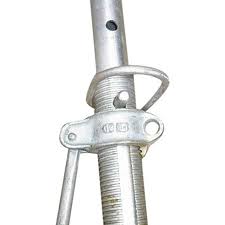Апр . 25, 2024 14:55 Back to list
SHORING OR SCAFFOLDING? UNRAVELING CONCEPTS OF MODERN CONSTRUCTION
In the construction industry, the terms “shoring” and “scaffolding” are often used interchangeably, but their concepts of use, configuration, and specific utilities can create confusion if their function is not clear.
A clarification is essential to understand their crucial role on any work site.
What is shoring? What is scaffolding? What are the differences?
Although both are temporary structures for construction, shoring and scaffolding have fundamental differences in purpose, design, and configuration:


Purpose and Function:
- Shoring: Designed mainly to support the formwork of concrete slabs and bridge decks during the concrete curing process, as well as other structural elements that temporarily need support during the construction process.
- Скафолдинг: Used as temporary platforms to allow work site personnel to access and work at heights. Its main purpose is to provide a safe and stable surface for work equipment during the execution of construction, maintenance, or repair tasks.
Design and Loading:
- Shoring: Shoring must withstand high loads, especially those due to the weight of the concrete, plus the additional loads of the formwork, personnel, and their equipment during the construction process.
- Скафолдинг: Scaffolding is designed to support the weight of personnel and their equipment, but does not need to withstand loads as heavy as those with shoring. However, scaffolding must be more flexible and adaptable to different heights and geometric configurations than shoring.

Materials and Configuration:
- Shoring: Shoring is usually made of steel or aluminum, and its configuration depends on the shape and size of the concrete element to be constructed.
- Скафолдинг: Scaffolding is generally built with tubular metal elements (steel or aluminum) and wooden or metal platforms assembled in various configurations to adapt to different buildings and/or structures.


In summary, the main difference between shoring and scaffolding lies in their purpose: shoring is for supporting formwork and/or structural elements on a temporary basis, while scaffolding provides working platforms at heights for work site personnel.
Adjustable Light Duty Props For Slab Formwork
Other temporary structures similar to scaffolding.
1.- Access tower: In its two (2) forms, the Multidirectional Access Tower and the Modular Access Tower, access towers are temporary structures generally made of scaffolding materials that allow personnel access to different points of a construction or work site. They facilitate safe transit between different levels on construction, industrial, and renovation sites. They are especially useful in temporary jobs where frequent access is required between areas located at different heights. These towers provide an efficient and safe solution, helping to improve productivity and minimize on-site risks.


2.- Rebar scaffolding: Rebar scaffolding entails temporary structures that are specifically designed to facilitate worker access to and the erection of reinforced steel for reinforced concrete construction. This type of scaffolding provides a safe and efficient working platform for workers and facilitates the placement of steel and mesh bars on the structural elements prior to the concreting phase. Their robust design and adaptability make them an indispensable tool to ensure efficiency and safety in rebar tasks.

3.- Concrete Pouring Platform: The concrete pouring platform is an auxiliary structure used in construction to facilitate the concreting and vibrating of concrete in columns and walls. These platforms are self-stable and include elements that ensure their firmness and stability during the concreting process. They are essential for construction tasks that require pouring concrete at heights or in areas that are difficult to access, offering an effective solution for pouring and vibrating concrete on site.

-
Timber Beam H20 for Agricultural Buildings
ЯңалыкларJul.21,2025
-
Tie Rod Concrete Formwork for Bridge Construction
ЯңалыкларJul.21,2025
-
Table Formwork for Slab Edge Protection
ЯңалыкларJul.21,2025
-
Load Calculations for Wall Formwork System
ЯңалыкларJul.21,2025
-
Concrete Column Form Work Systems Productivity Tips
ЯңалыкларJul.21,2025
-
Beam Slab Formwork for Ribbed Slabs
ЯңалыкларJul.21,2025
